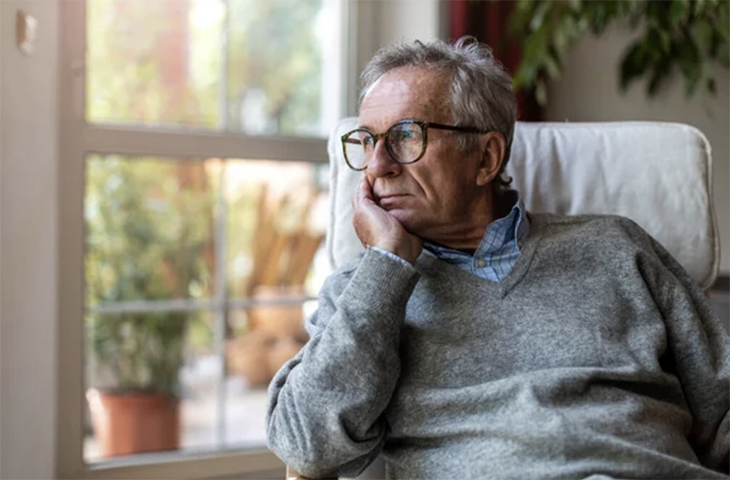
An escalating number of adults in the United States are opting for solitary living arrangements, and this trend of social isolation is seemingly exacting a toll on the health of the American population.
A recent study, features in the journals of the American Cancer Society, reveals that adults residing alone face a 32 percent higher risk of succumbing to cancer compared to their counterparts living with others. This elevated risk is particularly pronounced among adults aged 45 to 64 who choose to live independently, as their likelihood of cancer-related mortality is 43 percent greater than those in communal living situations.
Lead study author, Hyunjung Lee, PhD, a principal scientist with the cancer disparity research team at the American Cancer Society, said, “Findings in this study underscore the significance of addressing living alone in the general population and among cancer survivors, and call for interventions to reduce adverse effects of living alone and social isolation.”
Examining data spanning from 1998 to 2019 from the National Health Interview Survey and the National Death Index, Dr. Lee and her research team conducted an analysis encompassing nearly 475,000 adults aged 18 to 64 at the study’s commencement.
Approximately one-quarter of this cohort lived alone, while the remaining three-quarters cohabitated. Over the 22-year period, nearly 6,000 cancer-related deaths occurred, representing about 1.6 percent of individuals living with others, in contrast to around 3,000 cancer deaths (approximately 2.5 percent) among those residing alone.
Elevated Mortality Risk Observed in Men and White Individuals
In addition to identifying a heightened risk of cancer-related mortality among middle-aged adults, researchers observed that men living in solitary arrangements were 1.3 times more likely to succumb to cancer than their female counterparts. This gender disparity could be attributed, at least in part, to the higher prevalence of men (56 percent) choosing to live alone compared to women (44 percent).
An oncologist and the director of the Stanford Cancer Survivorship Program in California, Lidia Schapira, MD,said, “I wonder about the cultural values instilled in American educated men by a culture that promotes and values autonomy and independence to a fault. It makes me wonder if these men who were living alone were conditioned to shy away from asking for help or connecting to others.”
Furthermore, the correlation between living alone and cancer mortality exhibited greater strength among white adults compared to non-Hispanic Black adults. White adults living independently faced a 33 percent higher cancer mortality risk, while Black adults in similar living situations had an 18 percent elevated risk.
Individuals with higher educational attainment levels who lived alone encountered an increased risk as well. Those with less than a high school education living independently were 1.26 times more likely to die of cancer, while individuals with a college degree in solo living arrangement faced a 1.41 times greater risk compared to their cohabitating peers.
Dr. Lee and her colleagues put forth the notion that enhanced social support from the community, particularly among racial and ethnic minorities and low-income individuals, could potentially mitigate the association between living alone and cancer mortality in these demographic groups.
Health Problems Rise with Increased Isolation
The U.S. Census data indicates a significant surge in single-person households, escalating from 7 million households (13 percent) in 1960 to 38 million households (29 percent) in 2020.
In May of this year, U.S. Surgeon General Vivek Murthy, MD, issued an advisory drawing attention to the prevailing public health crisis characterized by loneliness, isolation, and a lack of connection within the country. Dr. Murthy emphasized how the absence of connection can elevate the risk of premature death to levels akin to daily smoking.
Dr. Murthy in a statement, “Our epidemic of loneliness and isolation has been an underappreciated public health crisis that has harmed individual and societal health. Our relationships are a source of healing and well-being hiding in plain sight — one that can help us live healthier, more fulfilled, and more productive lives.”
The study authors highlight that individuals experiencing isolation are more prone to adopting unhealthy habits. Citing prior research, they note that those living alone are less likely to adhere to healthy diets and more inclined to severe obesity, current smoking or heavy drinking, and significant psychological stress.
Dr. Schapira, who was not involved in the research, says, “What intrigues me is the possible relationship between lack of human connection and physiological processes that may affect biological phenomena such as immunity and stress in such a way as to increase susceptibility to cancer.”
Mental Health America highlights that loneliness triggers an increased production of the stress hormone cortisol, intensifying the experience of stress. Scientific investigations have indicated that heightened stress levels may contribute to the development of cancer.
Addressing the Challenge of Loneliness
In response to the findings associating solo living with excess cancer deaths, Dr. Lee and her team advocate for increased resources and training for clinicians. Additionally, they emphasize the urgency of research to develop interventions aimed at mitigating the negative effects of solo living.
Targeted programs, such as cancer screenings for individuals living alone, could potentially facilitate timely diagnosis, treatment, and attendance at medical appointments, ultimately lowering mortality rates within this population.
“We need to ask individuals if they live alone and if they are lonely, and be ready to respond with specific recommendations. It will take a major societal shift, however, to find solutions, and we should pay attention and get started,” says Dr. Schapira.



